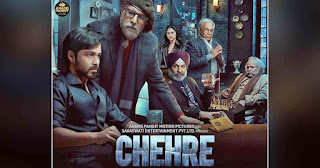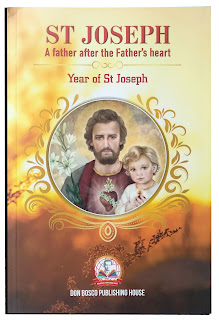The Modi Myth (Book Review)
Surendra Nihal Singh, The
Modi Myth, Authors UpFront Paranjoy, 2015, ISBN 978-9-38443-954-5, pp. 107, Rs.
345.
The Modi Myth
situates the Prime Minister against the wider canvas of contemporary Indian
politics. The author is a retired journalist and a much accredited editor of
well-known newspapers. He endeavours to present a background to the
swashbuckling personality who occupies a pivotal position in the grand Indian
political scenario.
The author begins by pointing out to Modi’s transition from
a humble background to the RSS and the world of politics, culminating finally
in his present position and status as the nation’s Prime Minister, a transition
he will refer to many times in the book. Interestingly, the point of departure
of the book is Modi’s governance in Gujrat and in particular, his handling of
the awkward questions that arose with regard to the 2002 Gujrat riots.
The author indulges in a constant back and forth,
illustrating events that help create the context either of a particular epoch
or the background leading up to it. Hence, he will conclude the chapter of
Modi’s time in Gujrat with the Congress’ taking over the reigns of Government
from the BJP-led, National Democratic Alliance in 2004. Interspersing the tale
of Modi are chapters that are purely historical, in as much as they recount
event/s that served to shape the Indian political scene.
Pandit Nehru is a name that recurs very often and as do his ideas
and policies, which gave a direction to the nascent nation. Mahatma Gandhi’s
name too appears on and off but the name which occupies a central place, even
at times displacing Narendra Modi, is his parent body, the Rashtriya Swayamsevak Sangh (RSS). The origin, rise and scope of
the RSS are described in accurate detail. The author does not mince words and
unabashedly indicates the imposing, though inconspicuous role that the RSS has
played in Indian politics, especially during BJP rule. The past tremors of the
quakes we are experiencing now are clearly delineated. The origins of the
aggressive Hindutva doctrine, the ghar-vapsi movement, rising intolerance
and other contemporary challenges secular India is facing today, find a place
in the lucid narrative.
Modi is an extraordinary person with an autocratic character
and a drive that is characteristic of a leader. He was nurtured by the RSS and
has imbibed their virtues and myths, which they pass off as historical facts
and have somehow managed to insert into school textbooks in Gujrat. He has set
an example in the use of social media for political mileage and campaigning. Modi’s
track record in Gujrat boasts of incredible development and progress and this
is what really drives the Modi engine, inspite of RSS’ reservations. So long as
the BJP shines, the RSS too enjoys the spotlight. But the tolerance by the RSS
of Modi’s eccentric ways as chief minister has changed into a subtly forced
subordination as Prime Minister. The behind-the-stage acrobatics between the
Prime Minister’s Office (PMO), the BJP and the RSS leak out often enough in the
latter part of the book and indicates the game of kings and pawns that is
constantly underway.
Modi’s foreign policy is given special treatment. While he
is praised for his initiatives and ventures he draws criticism for washing
dirty linen in public. The key behind the good picture given to the public is
Modi’s tendency to glorify himself and his achievements, besides his
ever-diligent communications department. A few of Modi’s interventions are
subject to reflection and the mandatory shades of opinion are presented
somewhat neutrally. Among them are the introduction of World Yoga Day, choice
of Smriti Irani as head of human resources development ministry and a new
formula for appointing judges to the Supreme Court. There is little doubt that
Narendra Modi wants to leave his stamp on India ’s history. In his favour are
his stamina, will power and administrative and political skills. The odds
against him may not seem manifold but are insidious to his desires. His ability
to embrace reason and cast off the myths he ingested while under the tutelage
of the RSS and the uphill task of keeping the RSS and its Hindutva ideology at bay in the governance of the country are his
key obstacles. Based on his success at overcoming these hurdles will depend the
legacy he desires to leave for posterity.
The book is highly readable. The author employs his
journalistic skills to good effect in constructing the narrative. A point of
weakness is the flow of the book. While the author has dealt with each
individual topic appropriately he has not tried to maintain a continuity of
thought. His leaps from present to past and vice versa, while helping to create
a context, do not in the strict sense lend anything to the broad topic at hand.
The author has appended a brief description of every character that has found
space in the book and this gives the uninformed reader an idea of who’s who. The
author has claimed responsibility for any error in the book and thankfully so,
for there are a few. On the whole, the book is very informative and its brevity
allows for quick reading. The neutral stance adopted by the author is admirable
and avoids encouraging the reader to create false prejudices. The book stays
faithful to its realistic presentation of the facts and ends on a note of hope.




Comments
Post a Comment